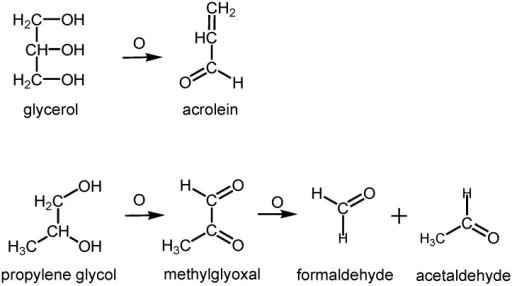
Propylene Glycol: Unveiling the Truth About Carcinogenicity Concerns
Propylene glycol is a synthetic liquid substance that absorbs water. It’s used in a wide range of industries, from food and beverage to pharmaceuticals and cosmetics. However, concerns have been raised regarding whether propylene glycol is carcinogenic. This article aims to objectively analyze the scientific evidence and address the common misconceptions surrounding propylene glycol and its potential link to cancer.
What is Propylene Glycol?
Propylene glycol, also known as 1,2-propanediol, is a clear, colorless, and viscous liquid with a slightly sweet taste. It’s produced industrially from propylene oxide. Its versatility stems from its ability to act as a humectant (retains moisture), solvent, and viscosity-decreasing agent. This makes it a valuable ingredient in diverse applications.
- Food Industry: As a solvent for food colors and flavors, and as a humectant to maintain moisture.
- Pharmaceuticals: As a solvent in oral, injectable, and topical medications.
- Cosmetics: In lotions, creams, shampoos, and conditioners to improve texture and moisture retention.
- Industrial Applications: As antifreeze and de-icing agent.
- E-cigarettes: As a base fluid for vaporizing nicotine and flavorings.
Addressing Carcinogenicity Concerns
The question of whether propylene glycol is carcinogenic is a frequent topic of debate. It’s crucial to examine the scientific evidence to form an informed opinion. Regulatory agencies, such as the U.S. Food and Drug Administration (FDA) and the World Health Organization (WHO), have evaluated the safety of propylene glycol for its approved uses.
Extensive studies, primarily conducted on animals, have investigated the potential carcinogenic effects of propylene glycol. These studies have generally shown that propylene glycol does not cause cancer when ingested, applied to the skin, or inhaled at levels typically encountered in consumer products. However, it’s important to note the dosage and route of administration are significant factors in toxicology studies.
Scientific Studies and Findings
Numerous scientific studies have explored the potential toxicity of propylene glycol. Here’s a summary of key findings:
- Chronic Toxicity Studies: Long-term exposure studies in animals have not demonstrated any evidence of carcinogenicity related to propylene glycol.
- Genotoxicity Studies: Tests assessing the potential of propylene glycol to damage DNA (genotoxicity) have been negative, indicating it is unlikely to cause mutations that could lead to cancer.
- Human Exposure Studies: Limited human studies have not shown any adverse health effects, including cancer, associated with normal exposure levels of propylene glycol in food, cosmetics, and pharmaceuticals.
It’s essential to distinguish between acute toxicity (immediate harmful effects from a single or short-term exposure) and chronic toxicity (long-term effects from repeated exposure). While high concentrations of propylene glycol can cause irritation or other adverse effects, these are generally reversible and not indicative of carcinogenic potential. [See also: Understanding Chemical Toxicity]
The Role of Regulatory Agencies
Regulatory agencies play a crucial role in assessing the safety of chemical substances like propylene glycol. The FDA, for example, classifies propylene glycol as “generally recognized as safe” (GRAS) for use in food. This designation indicates that experts have reviewed the available scientific data and concluded that propylene glycol is safe for its intended uses under specified conditions.
Similarly, the WHO has established acceptable daily intake (ADI) levels for propylene glycol based on toxicological data. These ADI values are designed to ensure that human exposure to propylene glycol remains below levels that could pose a health risk. [See also: FDA Regulations on Food Additives]
Propylene Glycol in E-Cigarettes: A Special Case
The use of propylene glycol in e-cigarettes has raised specific concerns due to the inhalation route of exposure. When heated and vaporized, propylene glycol can decompose into other substances, such as formaldehyde and acetaldehyde, which are known carcinogens. However, the levels of these substances in e-cigarette vapor are generally much lower than those found in cigarette smoke.
Furthermore, the long-term health effects of inhaling propylene glycol vapor are still under investigation. While some studies have suggested potential respiratory irritation, the evidence regarding carcinogenicity remains inconclusive. More research is needed to fully understand the risks associated with e-cigarette use. [See also: Health Risks of Vaping]
Misconceptions and Clarifications
Many misconceptions surround the safety of propylene glycol. One common misconception is that it is the same as ethylene glycol, a highly toxic substance used in antifreeze. While both are glycols, they have different chemical structures and toxicological properties. Ethylene glycol is significantly more toxic than propylene glycol.
Another misconception is that propylene glycol is inherently dangerous because it is a “chemical.” All substances are chemicals, and the toxicity of a substance depends on its specific properties and the dose to which a person is exposed. Propylene glycol has been extensively studied and deemed safe for its approved uses by regulatory agencies.
Conclusion: Propylene Glycol and Carcinogenicity
Based on the available scientific evidence, propylene glycol is not considered carcinogenic when used in accordance with regulatory guidelines. Extensive animal studies and limited human studies have not demonstrated any evidence of cancer associated with normal exposure levels. However, further research is warranted to fully understand the long-term effects of inhaling propylene glycol vapor, particularly in the context of e-cigarette use.
It’s essential to rely on credible sources of information and to consult with healthcare professionals if you have concerns about the safety of propylene glycol or any other chemical substance. Understanding the science behind these chemicals allows for informed decisions and helps dispel misinformation. The key takeaway is that while exposure to any substance should be mindful, the current evidence doesn’t support the claim that propylene glycol is a carcinogenic substance in typical applications.
The discussion surrounding propylene glycol highlights the importance of evidence-based decision-making in public health. By carefully evaluating scientific data and considering the opinions of experts, we can make informed choices about the products we use and the risks we are willing to accept. While concerns about chemicals are valid, it’s crucial to distinguish between hypothetical risks and those supported by concrete evidence. [See also: Evaluating Scientific Claims]
